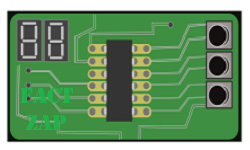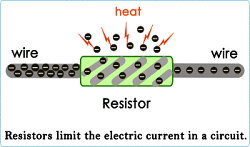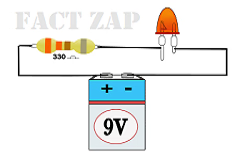Electronics for Beginners
This is a beginner's guide to electronics. It is a simple explanation of the fundamentals of electronic circuits. This article helps to teach yourself electronics and get started with DIY electronic projects.

Metals like copper and aluminium are made of atoms having loosely attached electrons.
In a metal wire, free electrons move when the wire is connected to an electric supply. Free electrons, also called valence electrons, flow
from atom to atom through the wire. Steady movement of these electrons make up electric current.
ELECTRON - ics deals with the flow of ELECTRONS
Electronic Gadgets
Electronic circuits and gadgets control electricity. Some electronic gadgets can convert electricity to sound and light.
Music players and headphones convert electricity to sound waves. Christmas lights convert electric current to light waves. From play bots to super computers,
all electronic gadgets work by controlling and converting the flow of electrons.
Getting started with Electronics
Studying electronics starts with components that control electricity. Take RESISTORs, one of the basic electronic components.
Resistors are ceramic tubes with a thin metal wire in the middle. The wire is narrow. It allows only a small number of electrons to
pass through. Resistors have markings to show how much current it blocks (called the resistance value).
When electrons flowing in the circuit come across a resistor, they cannot flow with ease. The resistor allows only a small amount of current to pass through. Excess current is converted to heat and escapes the resistor.

There are more electronic components like capacitors, diodes, and transistors. They control electricity in different ways.
Electronic Circuits
An electronic circuit is a loop in which electrons flow continously. It is made of wires and electronic components. Batteries are the most commonly used power source in small electronic circuits.

This is a simple electronic circuit. Batteries kick start valence electrons to move through the wire. This circuit has a small LED light. This LED has a current rating of 20mA. A resistor is added before the LED to minimize the current. Current flows through it continuously and the light stays on.
Electrical vs Electronics
Electrical circuits are designed to carry current from a source to a target. They do not control current. Electrical circuits carry Alternating Current or AC. Voltage changes from zero to a high value and then drops to a low value. Voltage keeps raising and dropping. If you mark the voltage levels in a graph, it looks like a wave.
ELECTRON-ic circuits control the flow of ELECTRONs. In other words, they control electricity. They deal with fixed voltage levels (like 0v and 5V), instead of increasing or decreasing alternating voltages.
Circuit Diagrams
Electronic circuits are drawn as diagrams. Electronic components in the circuit are shown as symbols. They are called circuit diagram or schematics. Looking at a completed electronic circuit shows a bunch of wires and components. But looking at a circuit diagram gives a quick idea on how the circuit works. Circuit diagrams make it easy to understand electronic circuits.
Read the next part on getting started with DIY electronic circuits : Breadboards
